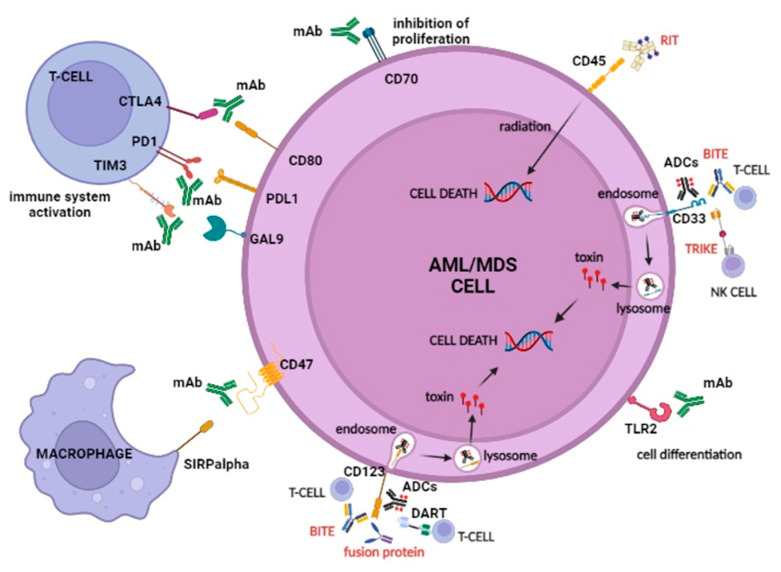Figure 1.
Main targets and modes of action of immunotherapy in AML/MDS. Monoclonal antibodies (mAb), radioimmunotherapy (RIT), antibody-drug conjugates (ADC), bispecific T-cell engagers (BiTE), trispecific killer engagers (TriKE), fusion protein, dual affinity retargeting antibodies (DARTs), and their targets in AML/MDS are represented. Emerging mAbs for AML and MDS are directed against the macrophage mediated phagocytosis inhibitor CD47, immune checkpoint molecules (CTLA4, PD-1/PD-L1, and TIM3), and TLR2. BiTEs lead to a physical interaction between T-cells and leukemic cells. TriKE, consisting of a fusion of two scFv, one against CD33 and one against CD16, bridged by an IL15 linker that promotes NK activation, inducing a cytolytic response by targeting CD33 and CD123 on leukemic cells. DARTs are composed of a diabody backbone with a c-terminal disulfide bridge that improves stabilization and causes stronger B cell lysis and T cell activation in comparison with other types of bi-specific mAbs. ADCs, RIT, and fusion proteins, by binding to their targets, deliver the conjugated compound, which fulfills its toxic action on the tumor cells. Image created with BioRender.com (accessed on 6 June 2022).

